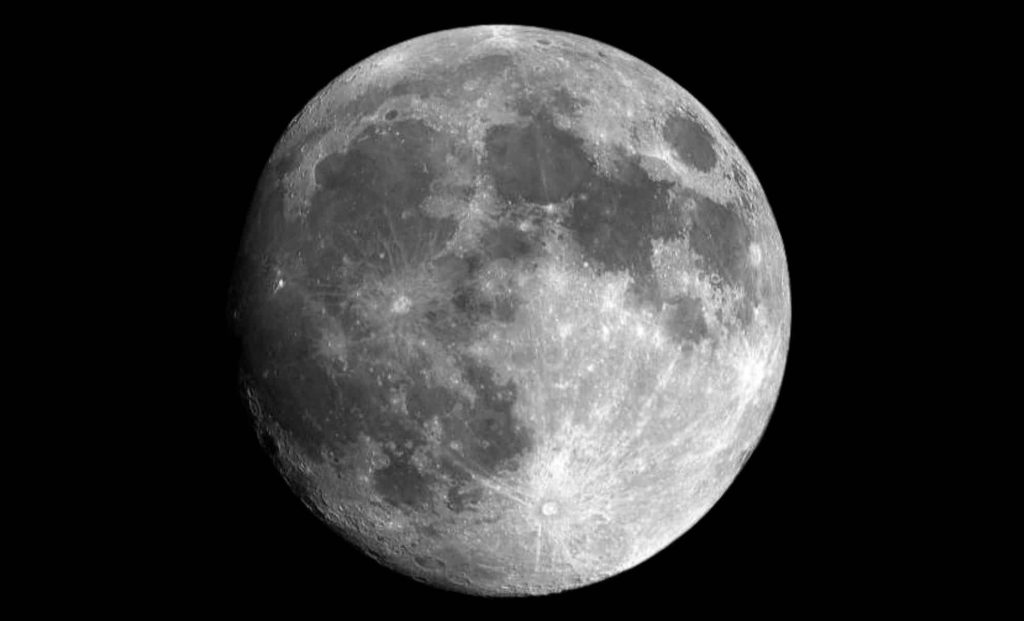The Moon Is More Alive Than We Thought! Scientists Discover Signs of Recent Geological Activity – Indian Defence Review

A new study has revealed that the Moon is far from geologically dead, with hundreds of newly discovered ridges suggesting that its surface is still shifting today. Scientists found evidence that tectonic forces have been active within the last 200 million years, meaning the Moon is not as dormant as we once believed. For decades, scientists believed the Moon was a geologically dead world, its surface frozen in time after billions of years of impact cratering and volcanic activity. However, a groundbreaking new study has revealed that the Moon is far more active than previously thought, with evidence of recent tectonic deformation and possibly ongoing seismic activity.Researchers from the Smithsonian Institution and the University of Maryland have identified hundreds of previously unknown ridges on the Moon’s far side, some of which may have formed as recently as 200 million years ago—a blink of an eye in geological terms. Using advanced mapping techniques and crater-counting methods, scientists determined that these small ridges are younger than other features in their surroundings, meaning the Moon’s crust is still shifting and evolving.This discovery challenges the long-standing belief that the Moon became geologically dormant billions of years ago and suggests that internal forces are still shaping its surface today. With future lunar missions on the horizon, understanding this newfound geological activity could be crucial for planning astronaut landings, lunar bases, and scientific exploration.For years, scientists believed that the Moon’s volcanic and tectonic activity ceased around three billion years ago. The dark, flat plains known as lunar maria—vast regions filled with solidified lava—were thought to have formed from compression forces that squeezed the Moon’s surface long ago, leaving behind large, arching ridges on the near side. But researchers now believe that these processes may still be happening today.“Many scientists believe that most of the Moon’s geological movements happened two and a half, maybe three billion years ago,” explained Jaclyn Clark, an assistant research scientist in the University of Maryland’s Department of Geology. “But we’re seeing that these tectonic landforms have been recently active in the last billion years and may still be active today. These small mare ridges seem to have formed within the last 200 million years or so, which is relatively recent considering the Moon’s timescale.”By analyzing high-resolution lunar maps, the team identified 266 previously unknown small ridges on the Moon’s far side, clustered in groups of 10 to 40, mostly in regions where ancient volcanic activity was common. This suggests that the Moon’s crust is still experiencing subtle shifts, possibly due to its gradual shrinking as its interior cools over time.To estimate the age of the newly discovered ridges, researchers used a technique called crater counting—a method that determines the age of a surface by measuring how many impact craters have formed on it. Older surfaces tend to have more craters, while younger geological features have fewer, more recent impacts.“Essentially, the more craters a surface has, the older it is; the surface has more time to accumulate more craters,” Clark explained. “After counting the craters around these small ridges and seeing that some of the ridges cut through existing impact craters, we believe these landforms were tectonically active in the last 160 million years.”This means that some parts of the Moon’s surface are much younger than previously assumed, and its interior may still be undergoing slow but steady contraction, creating surface ridges similar to those seen on Mercury and Mars.The discovery also suggests that Apollo-era seismic detections of shallow Moonquakes may be linked to these tectonic shifts, adding to the evidence that the Moon is not a completely dead world.Scientists suspect that the gradual shrinking of the Moon plays a major role in this newfound activity. As the Moon’s core continues to cool over time, its outer crust contracts, creating stress that causes faults and ridges to form on the surface.Interestingly, the study found that ridges on the Moon’s far side are structurally similar to those seen on the near side, suggesting that both were formed by the same geological forces. While the Apollo missions detected shallow Moonquakes decades ago, these findings suggest that tectonic activity on the Moon may still be ongoing.Understanding this process could have major implications for future lunar exploration, especially as NASA’s Artemis missions prepare to send astronauts back to the Moon for long-term missions. If the lunar surface is still shifting, it could affect where scientists place landers, habitats, and sensitive scientific equipment.This discovery comes at a critical time, as space agencies around the world are preparing to return humans to the Moon and build permanent research stations. If the Moon is still tectonically active, future missions must account for potential seismic activity, particularly when designing landing sites, lunar habitats, and scientific experiments.“We hope that future missions to the Moon will include tools like ground-penetrating radar so researchers can better understand the structures beneath the lunar surface,” said Clark. “Knowing that the Moon is still geologically dynamic has very real implications for where we’re planning to put our astronauts, equipment, and infrastructure on the Moon.”A better understanding of the Moon’s internal structure could also help scientists answer broader questions about planetary evolution. The Moon serves as a natural laboratory for studying rocky planetary bodies, and learning about its ongoing geological activity could offer insights into the past and future of Earth, Mars, and other celestial bodies.The revelation that the Moon is not as geologically dead as we once thought marks a major turning point in lunar science. Rather than a static, unchanging world, the Moon appears to be undergoing slow but continuous shifts, with recent tectonic activity shaping its surface in ways that were previously overlooked.With future lunar missions set to explore these regions firsthand, scientists are now eager to deploy new instruments that can directly measure tectonic activity, Moonquakes, and underground structures. As humanity prepares to return to the Moon, this discovery serves as a reminder that even our closest celestial neighbor still holds secrets waiting to be uncovered.Got a reaction? Share your thoughts in the commentsEnjoyed this article? Subscribe to our free Newsletter for engaging stories, exclusive content, and the latest newsComment Save my name, email, and website in this browser for the next time I comment.
© 2024 | Indian Defence Review | All rights reserved
Source: https://indiandefencereview.com/the-moon-alive-recent-geological-activity/






